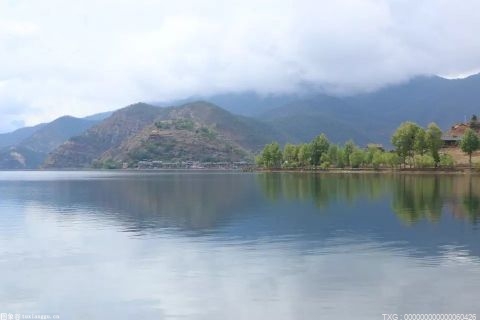The Difficult Journey of Hua'er Seeking Roots -- A Brief Talk on Wang Pei's Research on Hua'er

You may also be interested in:
-
A difficult journey for flowers to find their roots - a brief talk about Wang Pei's flowers -
Beijing further standardizes property management fees -
"Minxing" sings in Xuhui, and dreams are wonderful -
China Wins Angola -
Little Inzaghi: Last year, it was only one step away from the dream, and still -
Miracle Dancing Steps of Balara Small Devil Fairy Episode 26 -
Qiming Medical - B (02500. HK) has a medium-term income of 256 million yuan -
7 in Changsha are on the list! The first batch of modern service industry in Hunan Province created
Today's Hot Spots
Recommended for you
The Ningxia Forestry and Grass Bureau can fully realize the whole network office
more
-
Reed Foreign Exchange Anhui Hefei Office Wealth Salon Brings Wealth Light to Investors -
Fuchuang University: Chen Tianwei shares financial knowledge with you, and Shiyan training ends perfectly -
Reed Forex Jiashan Wealth Sharing will move towards the goal of wealth! -
Fuchuang University held an economic situation analysis meeting, and Chen Tianwei decrypted the golden period of foreign exchange -
Explore the mystery of wealth investment, here comes the Wealth Salon of Leader Foreign Exchange Chifeng Office! -
Talk about the future of the industry! All the talents gather in Lide Foreign Exchange Nanning Fortune Salon -
Reed Foreign Exchange: Use the power of finance to illuminate the road to wealth -
How much is the price of a box of Indian Super Xerox, and the price of 10 pieces of Super Xerox in 2023 has been updated
more
-
General Administration of Customs: In the first eight months, China's imports and exports were basically flat, and exports grew month on month for three consecutive months -
The adverse factors are weakening. In August, China's foreign trade imports and exports showed signs of improvement -
Four state-owned commercial banks clarify relevant rules -
China's import and export were basically flat in the first eight months of this year -
China's total import and export value in the first eight months was 27.08 trillion yuan -
New tax incentives of 1.05 trillion yuan in July before enterprise rescue -
Build a platform to promote projects and let private capital "dare to invest, will invest, and can invest" -
The Financial Stability Law has been submitted for consideration
Ranking
-
What are the concept stocks of phenolic resin? Tongcheng Xincai's share price rose 3.79% in 5 days -
What are the concepts of exhibition construction stock? Golden Mantis fell 8.16% in 16 days -
Analysis of the closing at noon on May 23: power module concept rose, led by Tonghe Technology -
Grain concept rose on May 20, led by food, Adisu and Jiamei Packaging -
Multi departments in Qinghai make every effort to ensure stable supply and demand situation of coal, electricity, oil and gas -
What are the concept stocks of cotton swab industry? Weike Technology's total operating revenue in 2021 is 2.075 billion yuan -
Zhejiang Kaihua: high-quality land greening, ecological improvement, enriching people and increasing income -
On May 23, the concept of mobile broadband rose, led by Meg Intelligence, Shenyu Shares, etc -
Heyuan, Guangdong: Strengthen the investigation of potential safety hazards and strengthen the forestry security line -
5.19 China Tourism Day Dawan District Online Celebrity Joint Gold Tour Guide Cloud Tour Huidong Live Broadcast Online
Wonderful push
-
The Difficult Journey of Hua'er Seeking Roots -- A Brief Talk on Wang Pei's Research on Hua'er -
General Administration of Customs: In the first eight months, China's imports and exports were basically flat, and exports grew month on month for three consecutive months -
The adverse factors are weakening. In August, China's foreign trade imports and exports showed signs of improvement -
The adverse factors are weakening. In August, China's foreign trade imports and exports showed signs of improvement -
China's import and export were basically flat in the first eight months of this year -
Four state-owned commercial banks clarify relevant rules -
China's import and export were basically flat in the first eight months of this year -
China's total import and export value in the first eight months was 27.08 trillion yuan -
New tax incentives of 1.05 trillion yuan in July before enterprise rescue -
Build a platform to promote projects and let private capital "dare to invest, will invest, and can invest" -
The Financial Stability Law has been submitted for consideration -
In August, the decline of foreign trade narrowed and new growth points were cultivated in the adverse situation -
China's total import and export value in the first eight months was 27.08 trillion yuan -
Build a platform to promote projects and let private capital "dare to invest, will invest, and can invest" -
In August, the decline of foreign trade narrowed and new growth points were cultivated in the adverse situation -
Foreign trade picked up in August! Export still faces challenges, and the policy of stabilizing foreign trade will increase -
Foreign trade picked up in August! Export still faces challenges, and the policy of stabilizing foreign trade will increase -
Zheng Xuelin, former member of the Judicial Committee of the Supreme People's Court and former chief judge of the First Civil Adjudication Tribunal -
Triple growth in 10 years! The installed capacity of renewable energy in China has exceeded 1.3 billion kilowatts -
The European smartphone market is in a downturn: shipments in the second quarter of 2023 hit a new level in 11 years -
Angobo, President of Merck China: show that integration with AI will greatly promote human progress [attach -
Zheng Xuelin, former member of the Judicial Committee of the Supreme People's Court and former chief judge of the First Civil Adjudication Tribunal -
Zheng Xuelin, former member of the Judicial Committee of the Supreme People's Court and former chief judge of the First Civil Trial Tribunal, was investigated -
Ministry of Commerce: Special theme activities will be held in 10 major business districts in China, including Wangfujing in Beijing -
Ministry of Commerce: The international "circle of friends" of China's digital economy continues to expand -
Still like strolling? Watsons was fined 80000 yuan for false advertising [Analysis of cosmetics retail industry with beauty] -
The rise of Chinese enterprises! Yan Ruoyuan, co president of Vicino: China's enterprises' OLED market share -
Ministry of Commerce: Special theme activities will be held in 10 major business districts in China, including Wangfujing in Beijing -
Digital trade, trade in goods and trade in services have become the three pillars of trade power -
40 seconds a car! The 200000th complete vehicle of Tesla Shanghai Super Factory went off the production line [attach Shanghai -
13 Departments Jointly Announce the Third Batch of National Cities' Pilot List of Fifteen Hour Convenient Living Circles -
Prospective IPO headline: The "Little Giant" of bearings opens its subscription! Honeycomb Energy has applied for IPO of Science and Technology Innovation Board -
Digital trade, trade in goods and trade in services have become the three pillars of trade power -
The strongest growth driver in the world! Next year, Huawei will ship more than 60 million mobile phones -
Heavyweight! For the first time, Brazilian pulp enterprises used RMB as the trade settlement currency for their exports to China -
China Mobile will stop selling the new iPhone 15? Note that this is a fake message -
The output value soared to 700 billion! China's nuclear technology application ushers in a major breakthrough [application of nuclear technology attached -
Super fast charging covers 100 cities! It is estimated that 5000 ultra fast charging stations will be built in Xiaopeng in 2027 -
He Yadong, the new spokesman of the Ministry of Commerce, appeared -
He Yadong, the new spokesman of the Ministry of Commerce, appeared -
Zifang Capital strategically invests in overseas ORANGEBIZ enterprises! Accelerate the building of an industry finance integration platform -
2023 Member Day | Come to Hanji, Ningbo to find the happiness of customization -
Huishan milk powder's baby powder products won the ITI International Taste Award -
Hehong Service's interim financial report in 2023: adhere to the main line of high-quality development, multiple core data -
Wait for 6 years! Tesla launched a new model 3259900 for sale [with new energy vehicles -
Over 100 million yuan a day! Jewelry Live Broadcasting Becomes the King of Goods [with market analysis of jewelry live broadcasting industry] -
For the second time this year! The fundamental reason why 11 banks cut deposit interest rates is that [Attached with historical deposit -
Beijing further standardizes property management fees -
"Minxing" sings in Xuhui, and dreams are wonderful -
China Wins Angola -
The Chinese Academy of Sciences and the Chinese Academy of Sciences announced the list of effective candidates for the 2023 academician co election. Several Shenzhen scientists were selected -
The Chinese Academy of Sciences and the Chinese Academy of Sciences announced the list of effective candidates for the 2023 academician co election. Several Shenzhen scientists were selected -
Reduce burdens and increase vitality, stimulate foreign trade enterprises with practical policies -
Increase support for SMEs -
Inzaghi Jr.: Last year, just one step away from his dream, he still hopes to become the protagonist on the stage of the Champions League -
Increase support for SMEs -
Continue to expand domestic demand and consolidate the foundation for the recovery and development of manufacturing industry -
State Administration of Financial Supervision: Credit resources are given a certain preference to private enterprises -
State Administration of Financial Supervision: Credit resources are given a certain preference to private enterprises -
Miracle Dancing Steps of Balala Small Devil Fairy Episode 26 (How can I watch Balala Small Devil Fairy -
(Economic) New regulations on the registration of enterprise names to prevent counterfeiting of state-owned enterprises, central enterprises and other illegal acts -
Ministry of Commerce: RCEP is an open and inclusive free trade agreement. The door is open to India -
Beijing Stock Exchange and National Stock Exchange launched the "three services" Guangdong travel activity to implement the "system of..." -
Ministry of Commerce: RCEP is an open and inclusive free trade agreement. The door is open to India -
Qiming Medical - B (02500. HK) medium-term income of 256 million yuan increased by 21.7% year on year -
(Economic) New regulations on the registration of enterprise names to prevent counterfeiting of state-owned enterprises, central enterprises and other illegal acts -
Ministry of Commerce: Maintain a Free and Open International Trade Order -
Suspense rises again! Who is the largest province of Chinese medicine? -
Ministry of Commerce: Maintain a Free and Open International Trade Order -
7 in Changsha are on the list! The first batch of Hunan modern service industry innovation and development zones were announced -
Major breakthrough! Monoclonal antibodies successfully prevent organ rejection after transplantation -
A car in three seconds! In 2023, Toyota's automobile output may exceed 10 million vehicles for the first time [attach China -
What signal does the two strongest cities release when they suddenly take a heavy position in agriculture? -
The annual interest rate of one-year deposit dropped to 1.58%! The Postal Savings Bank cut the fixed deposit rate today [attached -
"China Disney" soared by 190%! Haichang Ocean Park earned 750 million yuan in the first half of the year -
Prospective IPO headline: Youbao Online's third IPO! Artest can respond to the termination of listing -
Ministry of Commerce: Special policies and measures will be introduced to promote import and export, promote stability and improve quality -
First win of China Men's Basketball World Cup! 8 balls and 20 points to break the NBA interior! Qiao Shuai cheated everyone -
Ministry of Commerce: Special policies and measures will be introduced to promote import and export, promote stability and improve quality -
What are the manifestations and symptoms of adult calcium deficiency, and how to scientifically supplement calcium -
For the first time in history, it surpassed the United States! China becomes the world's largest iPhone market [with smart phones -
Keep falling! The number of newborn babies in South Korea dropped to an all-time low: only 249000 in 2022 -
Just now! Increase 1000 yuan respectively! Adjustment of special additional deduction standard of three individual income taxes -
Two departments: "one old and one young" deduction policy is conducive to further reducing family support -
Car chips are growing against the trend! In the first half of the year, the main business income of SMIC Integration grew by more than 60% [attach -
Another descent? Up to 25bps! Since September 1, several banks have lowered the deposit interest rate [ -
Up to 50000 yuan per child! After Ctrip, where will you give birth subsidy gift money -
Three departments: implement the corporate health function claim and the main responsibility of R&D evaluation -
Just now! Increase 1000 yuan respectively! Adjustment of special additional deduction standard of three individual income taxes -
Xingyi, Guizhou: Pink and Daisy Flower Sea Drunk Tourists -
Three departments: implement the corporate health function claim and the main responsibility of R&D evaluation -
The spokesman of the Ministry of Defense talks about the military relations between China and the United States: dialogue cannot be without a bottom line -
The spokesman of the Ministry of Defense talks about the military relations between China and the United States: dialogue cannot be without a bottom line -
Where is the Code of Small Flowers -
"Magic" comes into reality! Wearable devices realize "navigation with a little wrist" [attach -
Only $28 million last year, OpenAI is expected to achieve an annual revenue of $1 billion in the future -
The Ministry of Industry and Information Technology publicized the first batch of pilot cities for digital transformation of SMEs -
Dang Xiaohong, Deputy Director of the State Port Management Office: further expand the function of "single window" -
Broken arm transformation? Ford will cut three popular gasoline vehicles to make way for electric vehicles -
Breaking the 100 billion mark for the first time! Midea Group's total revenue in the second quarter was 101.2 billion yuan, creating a single quarterly calendar
this Daily news
-
How many methods are most commonly used to pickle salted duck eggs? The best way to pickle old wall mud? -
Which are the top ten marketing universities in China? Is the Central University of Finance and Economics on the list? -
What are the leading aerospace concept stocks? What is the revenue of Aeroengine in 2021? -
What are the leaders of the big consumption concept stocks in 2022? What is the revenue of Yanghe Shares in 2021? -
What are the leading stocks of water conservancy projects? What are the stock prices of water conservancy projects? -
What are the leading stocks of rare earth stocks? How can we buy Guangsheng Nonferrous? -
What are rare metals in resource stocks? What are the leading stocks? -
What does CP mean? Group CP implies hope for two people together? -
What is a vertical farm? What are the functions of vertical farms? -
Is it unnecessary for individual candidates to take the college entrance examination? Can I change my major after single admission?







